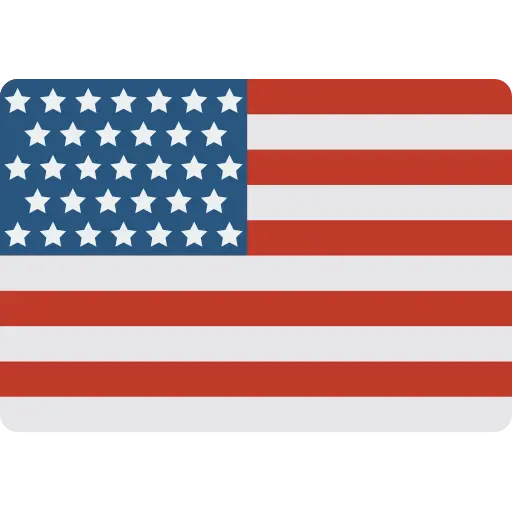آخرین بروزرسانی: December 4, 2023
Pursuing higher education in the United States offers international students a world-class academic experience, diverse cultural exposure, and numerous career opportunities. With its renowned universities and colleges, the USA has long been a popular destination for students seeking quality education and globally recognized degrees. This comprehensive guide will highlight the benefits of studying in the USA and showcase some of the best universities the country has to offer.
Benefits of Studying in the USA
1. Academic Excellence: American universities are globally recognized for their academic excellence, rigorous coursework, and high educational standards. They foster critical thinking, innovation, and intellectual growth, providing students with a solid foundation for future success.
2. Wide Range of Programs: The USA offers an extensive array of academic programs and disciplines across various fields of study. Whether you’re interested in business, engineering, arts, sciences, or humanities, there are abundant options to explore that cater to diverse interests and career aspirations.
3. Research Opportunities: U.S. universities are at the forefront of research and innovation, offering state-of-the-art facilities, cutting-edge technologies, and groundbreaking research opportunities. Engaging in research projects can enhance your academic experience and open doors to exciting advancements in your chosen field.
4. Flexibility and Customization: American universities often provide flexible curriculum options, allowing students to tailor their academic path to their specific interests. The emphasis on interdisciplinary studies enables students to explore diverse subjects and develop a broad skill set.
5. Cultural Diversity and Global Connections: Studying in the USA exposes students to a multicultural environment, fostering cross-cultural understanding, and global networking opportunities. Interacting with peers from different backgrounds enhances cultural intelligence and prepares students for success in an increasingly interconnected world.
Best Universities in the USA
Harvard University:
• Located in Cambridge, Massachusetts.
• Renowned for its prestigious programs in law, business, medicine, and various other disciplines.
• Offers rigorous academic training, distinguished faculty, and extensive research opportunities.
Stanford University:
• Located in Stanford, California.
• Known for its excellence in fields such as computer science, engineering, business, and the sciences.
• Emphasizes interdisciplinary collaboration and entrepreneurial spirit.
Massachusetts Institute of Technology (MIT):
• Located in Cambridge, Massachusetts.
• Globally recognized for its leadership in science, engineering, and technology.
• Offers cutting-edge research opportunities, innovation-driven education, and a vibrant academic community.
California Institute of Technology (Caltech):
• Located in Pasadena, California.
• Known for its strengths in science and engineering.
• Provides a rigorous academic environment and fosters groundbreaking research.
Columbia University:
• Located in New York City, New York.
• Offers a wide range of programs in various disciplines, including arts, sciences, business, engineering, and more.
• Renowned for its distinguished faculty, vibrant campus life, and access to unparalleled resources.
Princeton University:
Located in Princeton, New Jersey.
Known for its strong focus on undergraduate education and liberal arts programs.
Offers a wide range of disciplines, including humanities, social sciences, natural sciences, and engineering.
Yale University:
Located in New Haven, Connecticut.
Known for its prestigious programs in law, business, arts, humanities, and social sciences.
Emphasizes a liberal arts education and provides a close-knit and intellectually stimulating environment.
University of Chicago:
Located in Chicago, Illinois.
Renowned for its rigorous academic programs and emphasis on critical thinking and intellectual inquiry.
Offers a diverse range of programs across various disciplines, including economics, social sciences, humanities, and sciences.
University of California, Berkeley:
Located in Berkeley, California.
Renowned for its academic excellence and diverse range of programs.
Offers strong programs in fields such as engineering, computer science, social sciences, natural sciences, and humanities.
Cornell University:
Located in Ithaca, New York.
Offers a wide range of programs across various disciplines, including business, engineering, agriculture, arts, and sciences.
Known for its research-intensive environment and emphasis on practical application.
University of Pennsylvania:
Located in Philadelphia, Pennsylvania.
Known for its strengths in business, law, medicine, social sciences, and humanities.
Offers a vibrant campus life and opportunities for interdisciplinary collaboration.
Duke University:
Located in Durham, North Carolina.
Renowned for its strong programs in business, law, medicine, engineering, and the sciences.
Provides a comprehensive and interdisciplinary education, combining research and experiential learning.
Johns Hopkins University:
Located in Baltimore, Maryland.
Known for its strengths in medicine, public health, engineering, and the sciences.
Offers a research-intensive environment and opportunities to work with world-class faculty and experts.
Conclusion
Studying in the USA offers international students an exceptional educational experience, exposure to diverse cultures, and unparalleled career opportunities. The country’s top universities, including Harvard University, Stanford University, MIT, Caltech, and Columbia University, provide students with access to world-class education, cutting-edge research, and a global network of scholars and professionals.
When considering studying in the USA, it’s important to research universities based on your academic interests, location preferences, financial considerations, and career goals. Factors such as program offerings, faculty expertise, research opportunities, campus facilities, and student support services should be taken into account.
Embark on a transformative educational journey in the USA, where you can gain knowledge, explore your passions, and develop the skills necessary to thrive in your chosen field. Good luck with your decision-making process and your future studies in the USA!




















